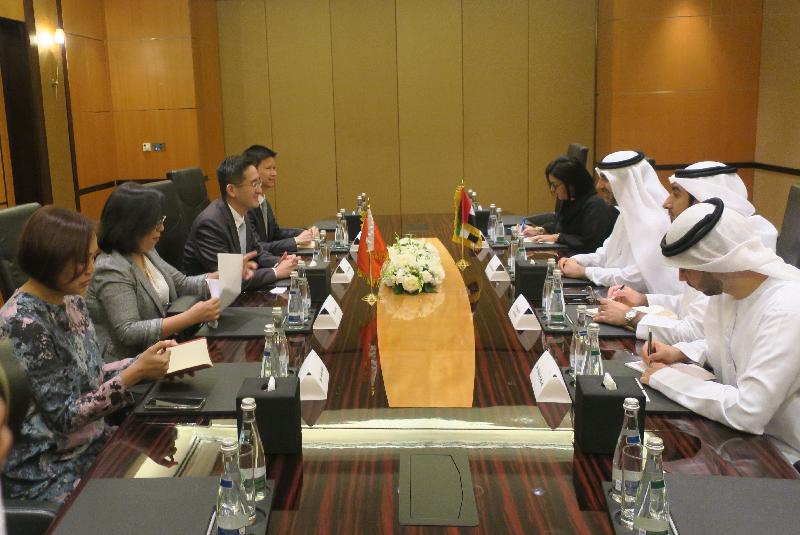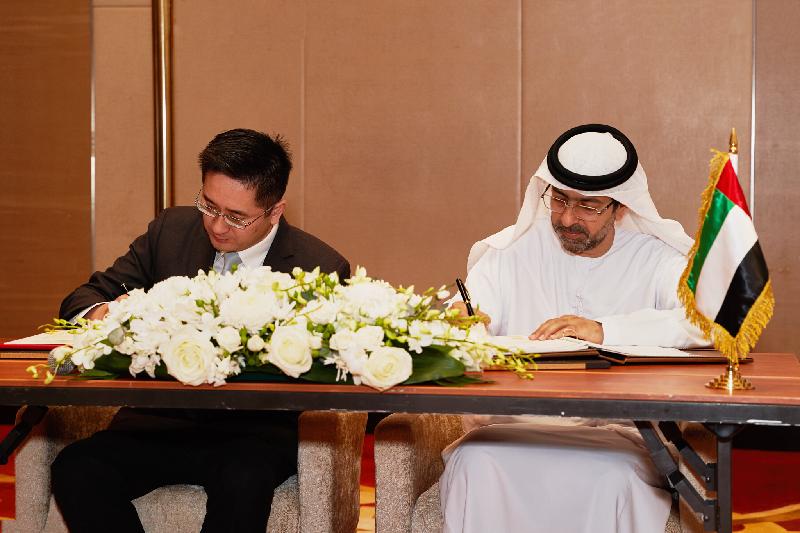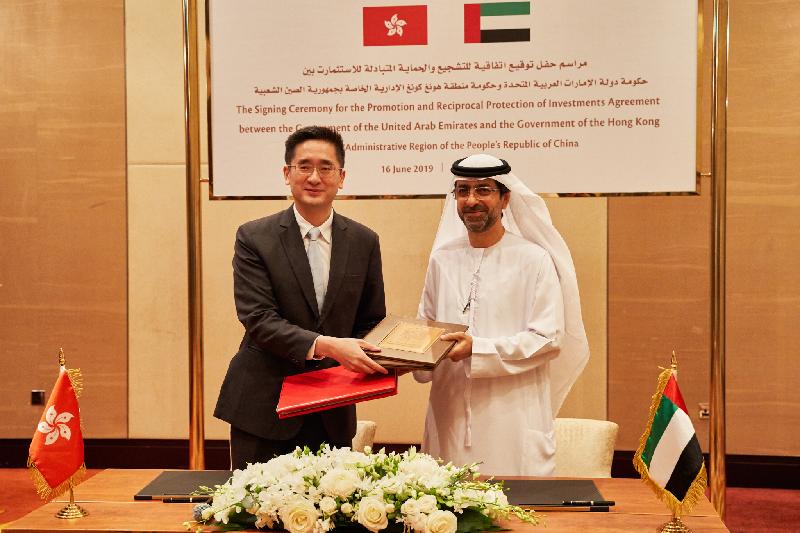The signing of the Hong Kong – United Arab Emirates (UAE) Investment Promotion and Protection Agreement (IPPA) is yet another milestone in the closer economic and trade ties between the UAE and Hong Kong, the Under Secretary for Commerce and Economic Development, Dr Bernard Chan, said at a networking luncheon in Dubai, the UAE, today (June 16, Dubai time). Dr Chan added that the agreement is mutually beneficial and timely, considering that entrepreneurs in both places are eager to explore market opportunities in regions less familiar to them under the current global economic climate.
Dr Chan commenced his visit programme to Dubai with a business and professional mission comprising over 60 business leaders and services professionals from the finance, consultancy, architecture, construction and infrastructure development, legal and dispute resolution, accounting, transportation and logistics and technology services sectors, as well as start-ups in the Mainland and Hong Kong.
As one of the highlights in the visit programme, the networking luncheon, co-organised by the Chinese General Chamber of Commerce of Hong Kong and the Mainland China – Hong Kong Belt and Road Business and Professional Services Council, provided a useful platform for the mission delegates to establish and strengthen networks with their UAE counterparts.
Dr Chan and the Undersecretary of the Ministry of Finance of the UAE, Mr Younis Haji Al Khoori, signed the IPPA this morning. Under the IPPA, the two governments undertake to provide fair and equitable treatment of investors, such as in compensation in the event of expropriation of investments, and the right to free transfers abroad of investments and returns. The agreement also provides for the settlement of investment disputes under internationally accepted rules.
Dr Chan said the Government is actively preparing for the setting up of a new Economic and Trade Office (ETO) in Dubai to further strengthen the relations with the UAE. It will be Hong Kong’s 14th ETO and the very first office in the Middle East region.
He also talked about the opportunities brought about by the Belt and Road Initiative as an area in which Hong Kong can widen its collaboration with the UAE and Mainland enterprises.
Highlighting Hong Kong's advantages as a global financial centre and an offshore Renminbi centre, Dr Chan encouraged Belt and Road project owners from the Mainland and the UAE to make use of Hong Kong's role as a financier. He also underlined Hong Kong’s strong commitment in supporting green financing, one of the focuses under the Belt and Road Initiative, citing the first government green bond issued in May with a landmark transaction that attracted orders four times its issuance size.
He added that Hong Kong has a deep pool of world-class talents who are well versed in cross-border deals. With their ample experience in planning, implementing and managing international projects, as well as resolving legal matters and business disputes, Hong Kong professionals can provide high-quality services and contribute valuable input in Belt and Road projects.
Prior to the networking luncheon, Dr Chan and the mission delegates attended a briefing jointly organised by the Hong Kong Trade Development Council and the Dubai Investment Development Agency, where they were briefed on the investment opportunities arising from the latest infrastructure projects in the UAE. Dr Chan then met with the Consul-General of the People's Republic of China in Dubai, Mr Li Xuhang, while other delegates attended a business matching networking session with local government representatives and project owners.
In the afternoon, Dr Chan and the mission delegates will pay a visit to the Expo 2020 Dubai site. Expo 2020 Dubai will be the first World Expo ever hosted in the Middle East, Africa and South Asia region. They will also visit the Pad, a residential building designed by a Hong Kong architect combining architecture with technology, in Dubai's Business Bay district.
Dr Chan and the mission delegates will receive a briefing by the Economic and Commercial Counsellor of the Consulate General of the People's Republic of China in Dubai, Mr Jin Lei, and join a networking dinner with local business representatives in the evening to better understand the business environment in the UAE.
Dr Chan will continue his visit to Dubai tomorrow (June 17, Dubai time).




